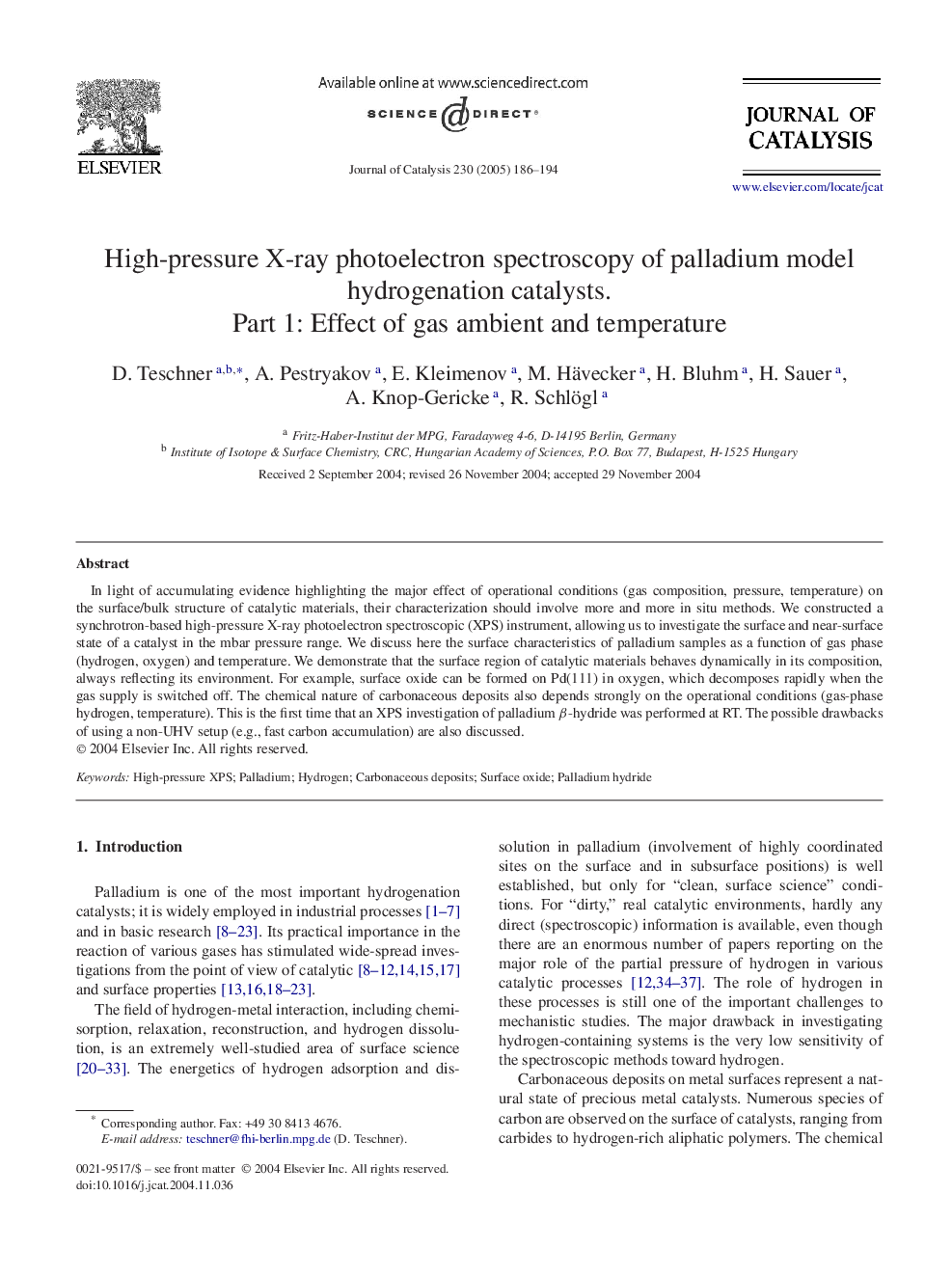| Article ID | Journal | Published Year | Pages | File Type |
|---|---|---|---|---|
| 10244541 | Journal of Catalysis | 2005 | 9 Pages |
Abstract
In light of accumulating evidence highlighting the major effect of operational conditions (gas composition, pressure, temperature) on the surface/bulk structure of catalytic materials, their characterization should involve more and more in situ methods. We constructed a synchrotron-based high-pressure X-ray photoelectron spectroscopic (XPS) instrument, allowing us to investigate the surface and near-surface state of a catalyst in the mbar pressure range. We discuss here the surface characteristics of palladium samples as a function of gas phase (hydrogen, oxygen) and temperature. We demonstrate that the surface region of catalytic materials behaves dynamically in its composition, always reflecting its environment. For example, surface oxide can be formed on Pd(111) in oxygen, which decomposes rapidly when the gas supply is switched off. The chemical nature of carbonaceous deposits also depends strongly on the operational conditions (gas-phase hydrogen, temperature). This is the first time that an XPS investigation of palladium β-hydride was performed at RT. The possible drawbacks of using a non-UHV setup (e.g., fast carbon accumulation) are also discussed.
Related Topics
Physical Sciences and Engineering
Chemical Engineering
Catalysis
Authors
D. Teschner, A. Pestryakov, E. Kleimenov, M. Hävecker, H. Bluhm, H. Sauer, A. Knop-Gericke, R. Schlögl,
